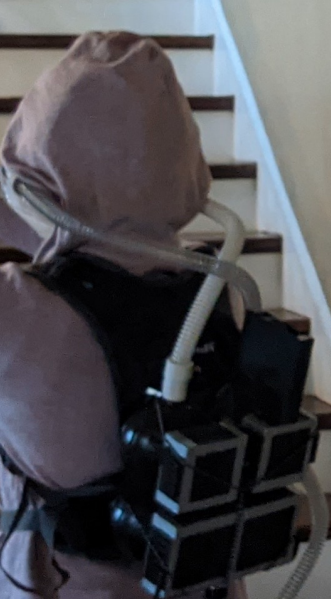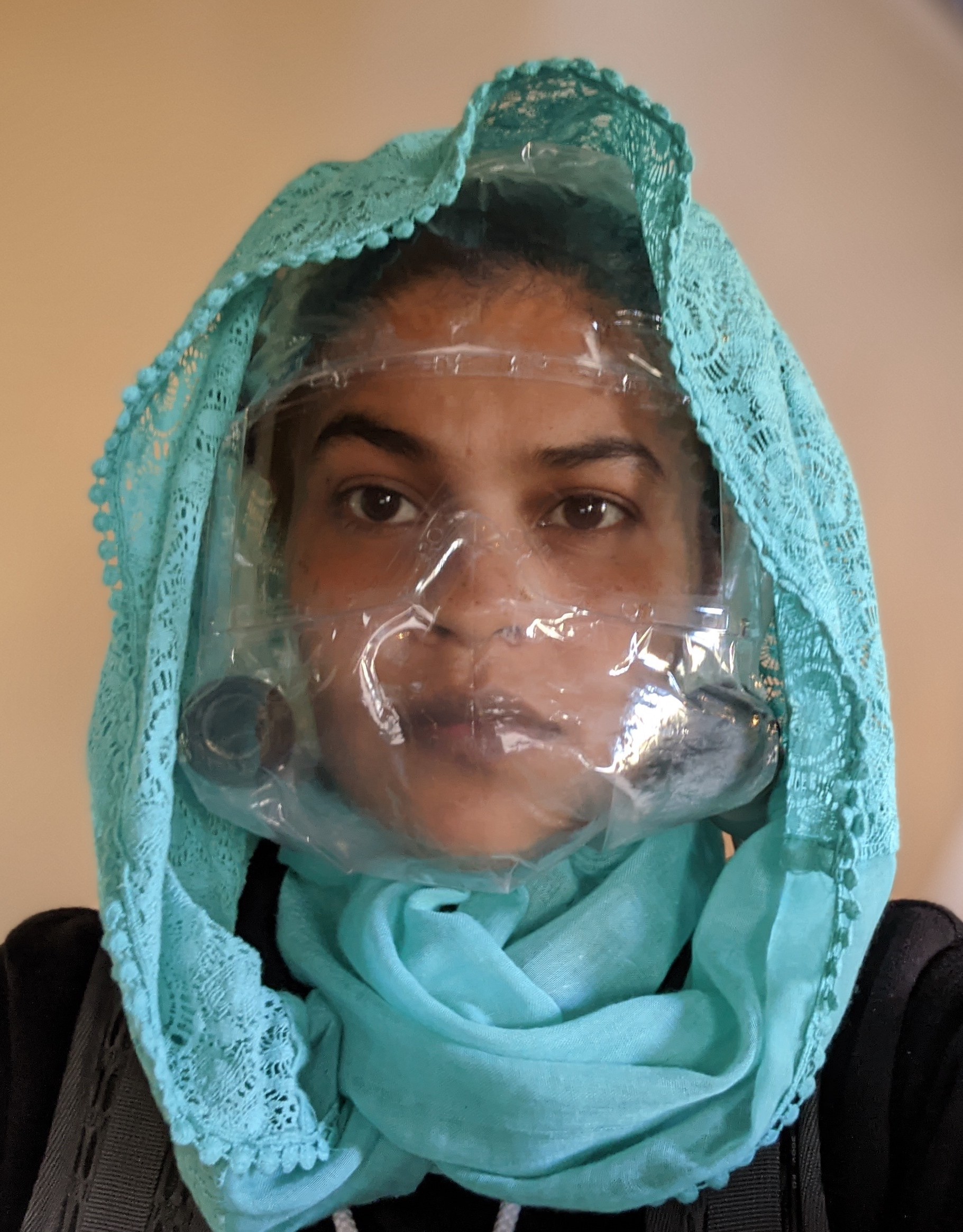Physics Professor Nausheen Shah develops UVC solution for inexpensive, reusable PPE
Inspired by family and friends in the health care industry as well as a concern about the lack of personal protective equipment (PPE), Wayne State University Physics Professor Nausheen Shah designed and constructed a prototype for a wearable, inexpensive, and reusable air disinfection device.
The device, called the Personal Ultraviolet Respiratory Germ Eliminating Machine (PUR-GEM), consists of an Ultraviolet-C (UVC) air disinfection unit worn as a backpack, which can then be connected by tubes to a plastic hood worn over the head. It was developed as an inexpensive and reusable form of PPE to mitigate the risk of infection and transmission of the COVID-19 virus. However, it can also be used for free-standing local air disinfection, for example, attached to ventilator ports.

"I desperately wanted to help with the current pandemic. I knew that the disposable nature of the most efficient PPE, such as N95 respirators, exacerbated the situation. I also knew that most biological organisms are highly susceptible to UVC. So, I thought, why not try to use UVC as an efficient, reusable solution for PPE? My hope is that the PUR-GEM will be of utility not only in the current situation, but also in the future for more general use."
According to recent studies, the COVID-19 virus can aerosolize and remain in the air for over 16 hours, so air purification technology is a priority when it comes to combating the virus. Scientists have long known about the disinfection properties of UVC radiation. In fact, UVC disinfection is widely used: it is currently used to decontaminate rooms and to disinfect N95 masks. The PUR-GEM utilizes this technology to directly disinfect the air that the wearer breathes in and out.
The project was initialized through the Helpful Engineering Initiative, where Shah connected with other professionals who were interested in the development of a UVC personal air disinfection device. With the help of Ismar Masic, Chris Jones, and Ritesh Gupta, the idea for the PUR-GEM was developed. Shah has published two papers: an initial proposal for the PUR-GEM and a paper detailing the development of the prototype.
"The challenge in using UVC for disinfection of turbulent flowing air is to ensure that it receives sufficient uniform radiation for efficient disinfection. I use internal reflections in a spherical cavity to significantly and uniformly amplify source UVC power, and connect a series of such cavities to effectively repeat the experiment, such that sufficient UVC dosage is received by air flowing through the PUR-GEM."

The prototype was tested for comfort and efficacy by three adults and one child. The testers wore the device for two hours at a time while going about their everyday business. The airflow as measured during use made for comfortable breathing and minimal fogging of the plastic hood. Wearers could still easily communicate while wearing the hood, despite slight muffling and echoing of sound. While the prototype is a bit bulky, it is lightweight, and the testers found they could go about their daily routines without limitation of their movement. Most importantly, the prototype is reported to provide continuous personal air disinfection of ~ 98% of viral particles. As detailed in the paper,while smaller units with higher disinfection (>99.99%) may be easily manufactured commercially, it is difficult to do so manually.
The PUR-GEM has been submitted for a provisional patent.
Professor Shah joined the WSU Department of Physics and Astronomy in 2015. She studies Theoretical High Energy Particle Physics, focusing on the study of the Higgs Boson and Dark Matter. She thanks fellow WSU Physics Professors Takeshi Sakamoto and Christopher Kelly for useful discussions and the use of lab equipment. She also thanks Kamran Shah, Iman Shah, Nahid Raees, and Vajahat Raees for helping test the PUR-GEM.